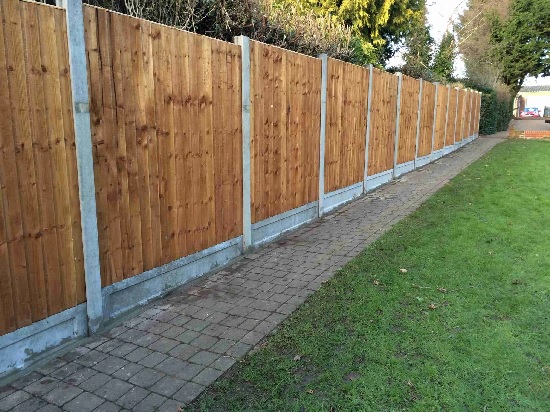Chain link fences have emerged as a versatile solution for various applications, from residential to commercial and industrial settings. Understanding the array of chain link fence supplies is essential for a successful installation. In this guide, we’ll delve into everything you need to know about chain link fence supplies and how to make informed choices.
Table of Contents
1. Understanding Chain Link Fencing: Basics and Benefits:
Chain link fencing, known for its affordability, durability, and low maintenance, has gained widespread popularity. Its adaptability makes it suitable for diverse purposes. From securing properties to creating enclosures, chain link fences excel.
2. Key Components of a Chain Link Fence:
A chain link fence comprises several crucial components that work harmoniously. These include fabric, posts, rails, fittings, tension bands, caps, and gates. Each element plays a vital role in ensuring the fence’s functionality and stability.
3. Chain Link Fence Fabric: Types and Considerations:
The chain link fence fabric comes in various types, such as galvanized, vinyl-coated, and Aluminium. Choosing the right fabric involves assessing factors like gauge, mesh size, and coatings. Galvanized fabric offers robustness, while vinyl-coated options present aesthetics and rust resistance.
4. Posts and Rails: Anchoring the Fence:
Posts and rails provide structural support to chain-link fences. Terminal, line, corner, and end posts serve specific purposes, ensuring stability and alignment. Materials like galvanized steel and Aluminium contribute to the fence’s longevity.
5. Fittings, Tension Bands, and Caps: Connecting and Securing:
Fittings are vital for securely connecting different components of the chain link fence. Tension bands maintain the fence’s tension, preventing sagging over time. Caps protect posts from moisture and enhance the fence’s appearance.
6. Chain Link Gates: Access Points and Options:
Gate options vary from swing gates to sliding gates, catering to different accessibility needs. Proper gate hardware and security features are essential for functionality and safety. Selecting the right gate size and style ensures seamless integration with the fence.
7. Accessories and Additional Features:
Chain link fences can be enhanced with optional accessories like privacy slats, windscreens, and barbed wire. These features offer increased privacy, security, and customization. Evaluating the need for these add-ons can lead to a more tailored fencing solution.
8. Installation Tips and Maintenance Guidelines:
Installing a chain link fence involves a step-by-step process that includes fabric installation, post setting, and attaching fittings. Regular maintenance, such as cleaning and rust prevention, prolongs the fence’s lifespan. Periodic inspections help detect and address issues promptly.
9. Cost Considerations and Budgeting:
The cost of chain link fence supplies encompasses fabric, posts, gates, accessories, and Labour. Material choices and additional features influence the overall budget. Budgeting wisely ensures obtaining the desired fence without overspending.
Conclusion
In conclusion, a comprehensive understanding of chain link fence supplies is crucial for a successful installation. From fabric types to gate options and accessories, each element contributes to the fence’s functionality and aesthetics. By making informed decisions and considering budget constraints, individuals can achieve a well-designed, durable chain link fence that meets their specific needs.

